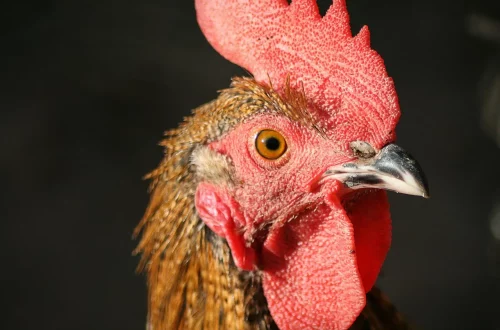
Creating the Perfect Gecko Enclosure for Your Scaly Companion
Creating a suitable environment for your pet gecko is essential for its well-being and longevity. Geckos, with their unique behaviors and vibrant colors, have become popular among reptile enthusiasts. However, providing the right habitat is crucial to ensure they thrive. A well-designed enclosure not only caters to the physical needs of these creatures but also mimics their natural habitat, which is vital for their psychological health.
When setting up a gecko enclosure, several factors come into play, including size, temperature, humidity, and decor. These aspects influence the overall quality of life for your scaly friend. Understanding their natural habitat can give you insights into how to create an effective space that supports their instincts and behaviors. Additionally, the right enclosure setup can prevent health issues, promote natural behaviors, and enhance the visual appeal of your pet’s home.
In this guide, we will explore the essential elements of creating a perfect gecko enclosure, ensuring your pet has a safe, comfortable, and stimulating environment.
Choosing the Right Size Enclosure
Selecting the appropriate size for your gecko’s enclosure is one of the most critical steps in setting up their habitat. The size of the enclosure will largely depend on the species of gecko you have, as different species have varying space requirements. Generally, a larger enclosure is better, as it provides more room for exploration and exercise, which are essential for your gecko’s physical and mental well-being.
For smaller gecko species like the leopard gecko, a 20-gallon tank is typically sufficient for one adult. However, if you’re considering housing multiple geckos or a larger species, such as the crested gecko, you may need a larger terrarium or even a custom-built enclosure. It is essential to ensure that the enclosure has enough floor space rather than just height, as many gecko species prefer to stay close to the ground.
Ventilation is another important factor to consider when selecting an enclosure. Adequate airflow helps to prevent mold and bacteria growth, which can be harmful to your gecko. Look for tanks that have mesh tops or sides to allow for proper air circulation while retaining humidity levels. Additionally, ensure that the enclosure is secure and escape-proof, as geckos are known for their ability to find small openings.
Once you have the right size enclosure, it’s time to think about the layout. Providing different zones within the habitat can help cater to your gecko’s needs. For instance, a warm basking area, a cool hiding spot, and a humid area can create a microhabitat that mimics their natural environment.
In summary, choosing the right size and type of enclosure is vital for your gecko’s health and happiness. Take the time to research the specific needs of your gecko species to create a comfortable and secure space for them to thrive.
Temperature and Humidity Control
Temperature and humidity are crucial factors in maintaining a healthy habitat for your gecko. Reptiles are ectothermic, meaning they rely on external heat sources to regulate their body temperature. Therefore, creating a temperature gradient within the enclosure is essential. This gradient allows your gecko to move between warmer and cooler areas as needed.
For most gecko species, a basking spot should be maintained at a temperature of around 85-90°F (29-32°C). This area can be created using a heat lamp or a heat mat placed underneath one side of the enclosure. It’s important to monitor the temperature regularly with a reliable thermometer to ensure it remains within the appropriate range.
On the cooler side of the enclosure, temperatures should be lower, around 70-75°F (21-24°C). This allows your gecko to cool down when needed. Nighttime temperatures can drop slightly, which is normal for many gecko species, as long as they do not fall below the minimum recommended levels.
Humidity is another critical aspect to consider. Different gecko species have varying humidity requirements. For example, leopard geckos thrive in relatively low humidity, around 30-40%, while crested geckos prefer a higher humidity level of 50-70%. To maintain proper humidity levels, you can mist the enclosure lightly or provide a water dish. Additionally, using substrates that retain moisture, such as coconut fiber or sphagnum moss, can help maintain humidity levels.
Be mindful of the signs of improper humidity, which can include lethargy or shedding problems. A hygrometer can be a useful tool to monitor humidity levels accurately. Creating a balanced environment with the right temperature and humidity will ensure your gecko remains healthy and active.
Decor and Enrichment for Your Gecko
Creating an enriching environment is essential for your gecko’s mental stimulation and overall well-being. The right decor not only makes the enclosure visually appealing but also mimics the natural habitat that geckos thrive in. Including various elements like hiding spots, climbing structures, and substrate allows your gecko to express natural behaviors.
Start by choosing a suitable substrate for the bottom of the enclosure. Options like reptile carpet, paper towels, or coconut fiber can provide a safe surface. Avoid using sand or loose substrates, as they can lead to impaction if ingested.
Hiding spots are crucial for geckos, as they provide security and a sense of safety. You can use commercially available hides or create your own using rocks, logs, or ceramic pots turned upside down. Make sure to place these hides in both the warm and cool areas of the enclosure to give your gecko options.
Climbing elements, such as branches or rocks, can enhance the vertical space of the enclosure. Many gecko species enjoy climbing, and providing these structures encourages physical activity. Additionally, plants, whether real or artificial, can add beauty and create a more natural environment. If using live plants, ensure they are non-toxic and safe for your gecko.
Lastly, consider adding enrichment activities. Items like food puzzles or foraging materials can stimulate your gecko mentally and encourage natural hunting behavior. Regularly changing the layout of the enclosure or introducing new items can keep your gecko engaged and prevent boredom.
In conclusion, a well-decorated and enriched enclosure plays a significant role in your gecko’s happiness and health. By providing various hiding spots, climbing structures, and mental stimulation, you create a thriving environment that mirrors their natural habitat.
Feeding and Care Routine for Your Gecko
Feeding your gecko a balanced diet is crucial for its overall health. Different gecko species have different dietary needs, so it’s essential to understand what your specific type requires. Most geckos are insectivores, which means they primarily eat insects, while some, like the crested gecko, are omnivores and enjoy both insects and fruit-based diets.
When feeding your gecko, make sure to provide a variety of insects, such as crickets, mealworms, and roaches. It is essential to gut-load these insects before feeding them to your gecko, which means feeding the insects nutritious foods to enhance their dietary value. You should also dust the insects with a calcium supplement to support your gecko’s bone health, especially during their growing phase.
Establishing a feeding schedule is also important. Most geckos will benefit from being fed every other day, while younger geckos may require daily feedings due to their higher energy needs. Always monitor your gecko’s weight and adjust the feeding frequency and amount accordingly.
In addition to a proper diet, regular care routines are essential. This includes spot-cleaning the enclosure daily to remove waste and uneaten food, as well as performing a deep clean of the entire habitat every few weeks. During a deep clean, remove all decor, clean the surfaces with reptile-safe disinfectants, and replace the substrate if necessary.
Lastly, regular health checks are vital. Pay attention to your gecko’s behavior, appetite, and shedding patterns. Issues like lethargy, lack of appetite, or abnormal shedding can indicate health problems. If you notice any concerning signs, consulting a veterinarian experienced with reptiles is crucial.
By establishing a consistent feeding and care routine, you can ensure your gecko remains healthy and happy, contributing to its overall quality of life.
In conclusion, creating the perfect gecko enclosure requires careful consideration of various elements, including size, temperature, decor, and feeding routines. By addressing these aspects thoughtfully, you can provide a thriving environment for your scaly companion. Remember that each gecko species has unique needs, so always do your research to cater specifically to your pet’s requirements.
**Disclaimer:** This article is for informational purposes only and should not be considered medical advice. For any health concerns regarding your pet gecko, please consult a qualified veterinarian.




